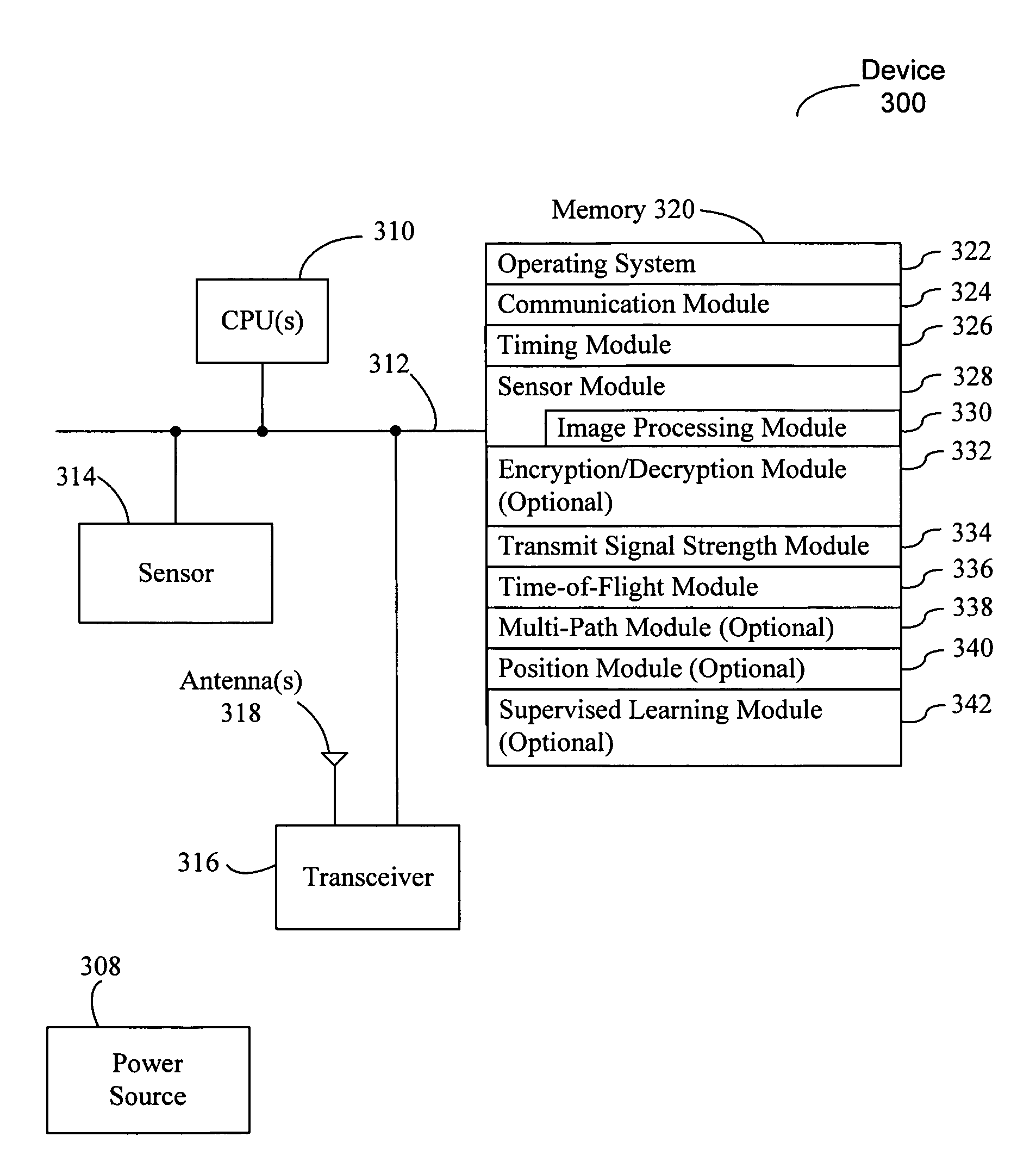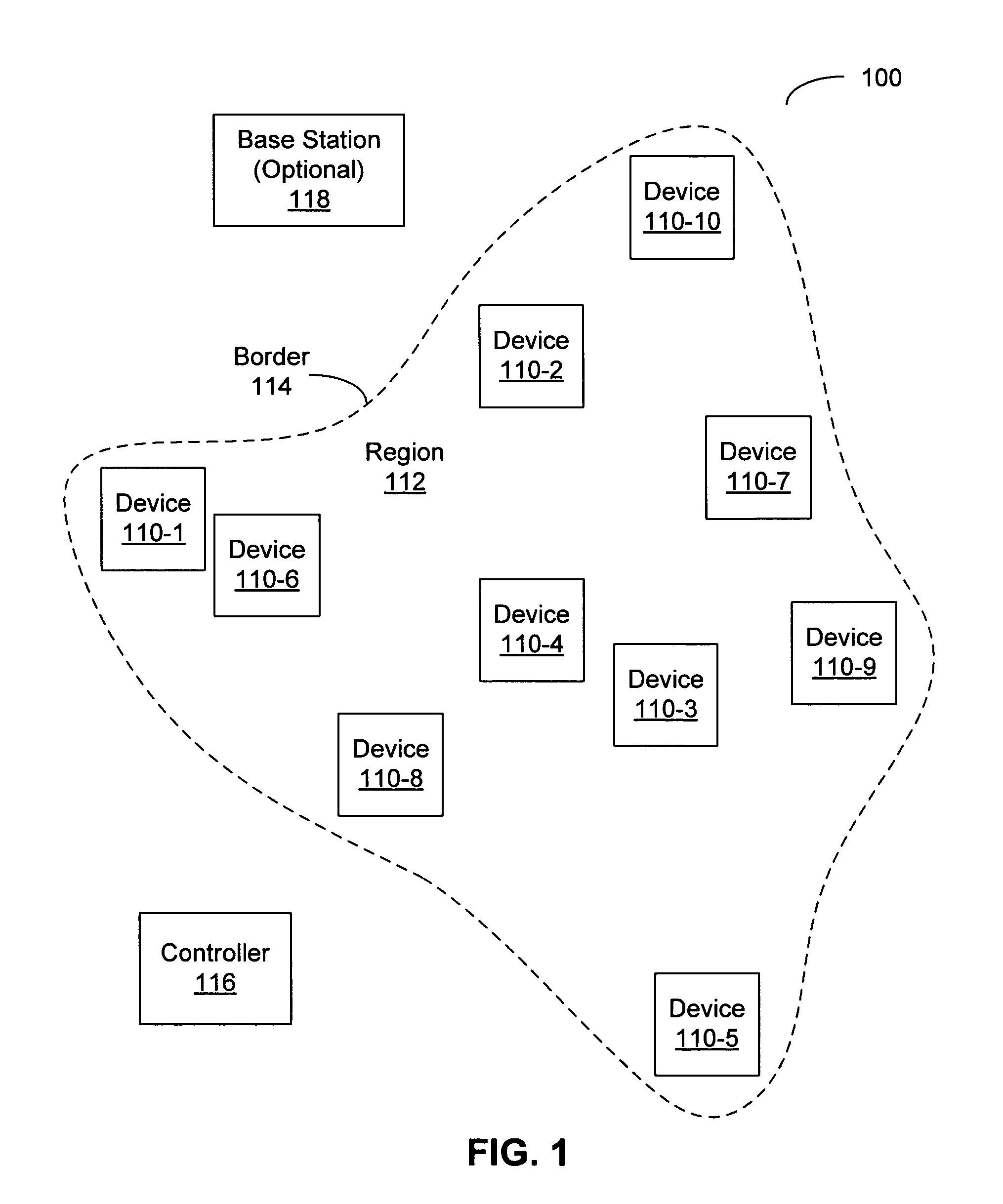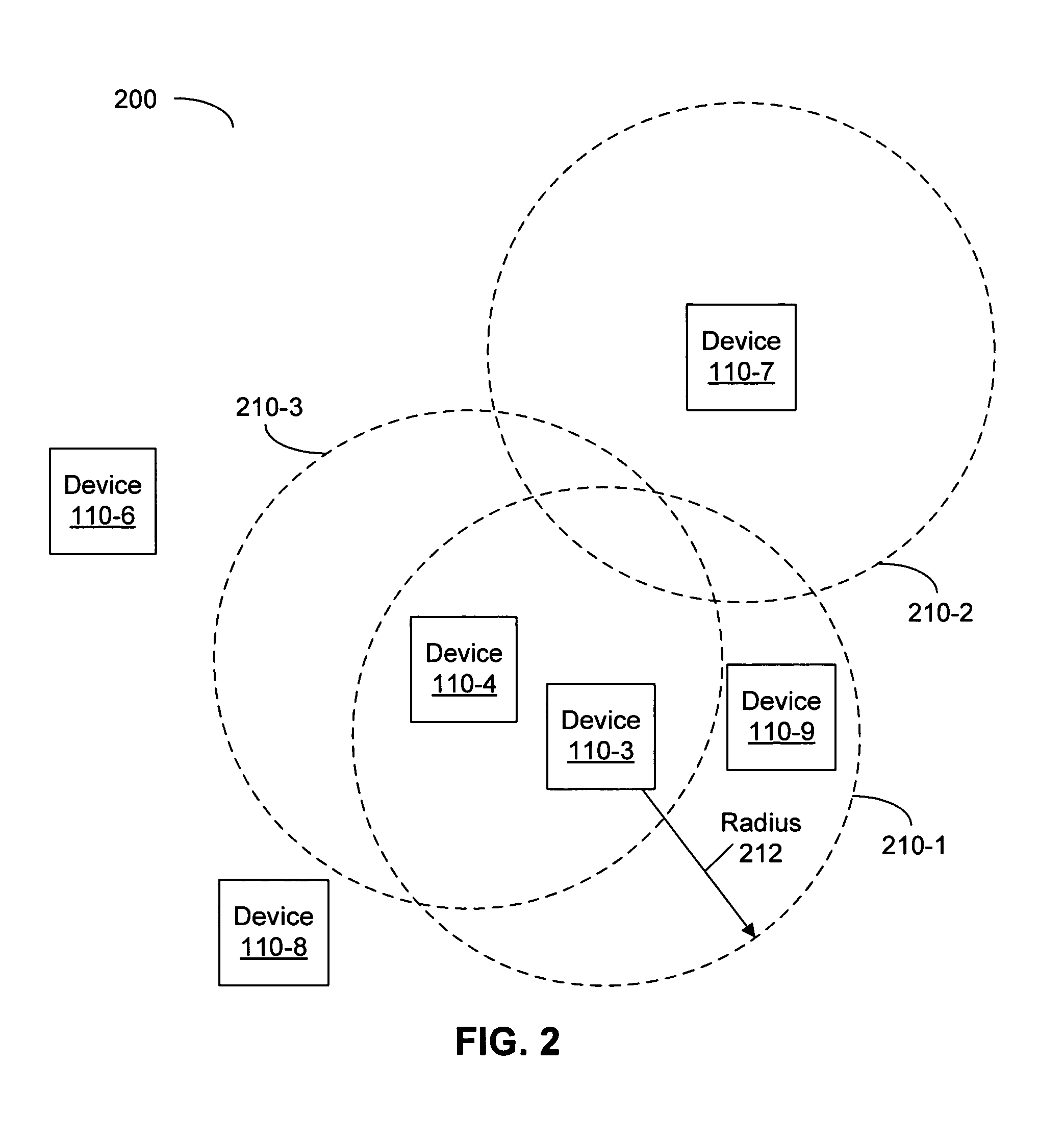Sensor localization using lateral inhibition
a technology of lateral inhibition and sensor, applied in the direction of instruments, computer control, process and machine control, etc., can solve the problems of consuming significant power, unable to use pre-determined sensor locations, and using multiple base stations and high-frequency transmitters and receivers that are expensive and expensive, so as to facilitate lateral inhibition and increase the spatial resolution of a position.
- Summary
- Abstract
- Description
- Claims
- Application Information
AI Technical Summary
Benefits of technology
Problems solved by technology
Method used
Image
Examples
embodiment 200
[0044]FIG. 2 is a block diagram illustrating an embodiment 200 of communication between devices 110 in the array. As discussed above, the given device may communicate with other devices within the pre-determined distance. For example, the device 110-3 may communicate with device 110-4 and 110-9 that are within a region 210-1 of radius 212. Other devices 110 have corresponding regions 210 of communication. The radius 212 may, at least in part, be determined by the strength of the communication signal(s) transmitted by the device 110-3. For example, if the strength corresponds to an intensity or power, the region 210-1 of effective communication is proportional to an inverse of the radius 212 to the nth power, where n may be between 2 and 3. In other embodiments, the strength is a magnitude of an amplitude of the communication signal.
[0045]FIG. 3 is a block diagram illustrating an embodiment of a device 300 (such as one of the devices 110 in FIG. 1), which includes one or processors 3...
embodiment 600
[0062]We now discuss illustrative embodiments of the method and system that utilize lateral inhibition. FIG. 6A is a block diagram illustrating an embodiment 600 of strengths of communication signals from devices in an ordered array at the start of the calibration mode of operation. As indicated by the uniform (white) shading 610-1 of the devices, the strengths of the communication signals from the devices are initially the same.
embodiment 650
[0063]As illustrated in embodiment 650 in FIG. 6B, the devices may modify the strengths of the communication signals based on signals received from other devices. For example, strengths of the communication signals may be modified based on the strengths of received signals. Devices that have more neighbors or that are closer to the center of the array have lower strengths. As a consequence, the strengths of the communication signals vary across the array. This is illustrated by shadings 610. Note that the strength is largest at the border of the array and smallest at the center. Furthermore, in some embodiments the strengths may have a discrete distribution (such as that associated with quantized bins) or a continuous distribution.
[0064]Thus, the strengths of the communication signals provide relative position information, such as where the given device is in the array. In addition, the strengths of the communication signals determine the border of the array. This information may be...
PUM
 Login to View More
Login to View More Abstract
Description
Claims
Application Information
 Login to View More
Login to View More - R&D
- Intellectual Property
- Life Sciences
- Materials
- Tech Scout
- Unparalleled Data Quality
- Higher Quality Content
- 60% Fewer Hallucinations
Browse by: Latest US Patents, China's latest patents, Technical Efficacy Thesaurus, Application Domain, Technology Topic, Popular Technical Reports.
© 2025 PatSnap. All rights reserved.Legal|Privacy policy|Modern Slavery Act Transparency Statement|Sitemap|About US| Contact US: help@patsnap.com



